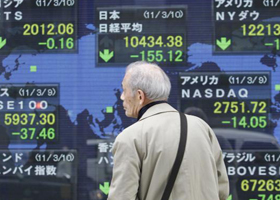

Rehearsing the theoretical arguments for emerging market stocks, Zev Frishman, senior vice-president with Open Access Ltd., told delegates at the 2012 Benefits & Pension Summit that conventional investing wisdom often doesn’t hold up.
Over the past 20 years, emerging market equities “should have given you higher returns than developed market equities,” because “many emerging markets have experienced really spectacular growth.” Now emerging markets account for almost half of global GDP.
But, in emerging markets, there is little to no correlation between economic growth and equity returns. GDP growth is correlated with corporate earnings in the aggregate, but not with earnings per share (EPS) growth. Frishman cited a number of reasons for why this would be. Earnings growth can show up in new, unlisted businesses and in initial public offerings. But, by definition, this growth escapes existing public market investors. Frishman estimated that there’s a leakage of about 2% between GDP growth and EPS growth.
Another caveat is that much depends on valuations. China, for example, has had the fastest GDP growth of any emerging market in the past two decades. It also has had the second-worst-performing stock market, after Pakistan. The reason? People tend to overpay for recent growth.
Perhaps a cheaper way to gain exposure to emerging markets is through multinational companies. Yum Brands, which franchises Pizza Hut and KFC, among others, is deriving a significant portion of its revenues from China. Similarly, Avon is seeing half of its earnings coming from Brazil, where it is effectively part of a duopoly. But Avon trades at 12 times earnings, whereas its competitor sports a price/earnings ratio of 24.
That said, in aggregate, emerging market valuations look attractive. But, he warned, “this is not a free lunch.” While emerging markets have indeed outpaced developed market investments recently—by about 200 basis points—volatility is still higher than in developed markets, and tail events are more severe.
Peter Marber, chief emerging market debt strategist with HSBC Global Asset Management, echoed Frishman on wrong-headed “collective wisdom.” Emerging market growth hasn’t translated into outsized equity returns, but it has for bonds and currencies.
Investors aren’t aware of this because they aren’t looking at the risk-adjusted returns. They rely on the tenets of finance theory, among them that stocks beat bonds. Looking at the data from the past decade, that isn’t true. Bonds have beat stocks, with lower volatility.
For an institutional investor, the natural place to have been for the past decade was Canadian and U.S. bonds. But with yields at 2% for 10-year bonds and 3% for 30-year bonds, there’s not much yield—and, with interest rates at historic lows, not much room for a capital gain either.
Global bond diversification doesn’t really work either, Marber suggested, because the index is dominated by “the crappiest economies in the world”: to wit, the countries that have issued the most debt. Developed markets, even before the financial crisis, had 80% debt-to-GDP ratio.
“I’d rather diversify into the growth story,” Marber said. Emerging markets have a 40% debt-to-GDP ratio, and that is tracking lower. And emerging market debt is more likely to get a credit rating upgrade. But markets are pricing in a 3% premium for emerging market debt. Because of the euro crisis, he said, investors are not going to bid up emerging market bonds, even though Mexico and Brazil may be better credits than Spain, Italy and Ireland.
Diversifying can also take advantage of different interest rate and inflation cycles in emerging markets; some have room to lower interest rates. High growth, while normally a sign of impending inflation, has another upside. For every 1% advance in GDP, there’s a 0.3% appreciation in currency. This played out with the growth of the U.S. against Britain, where the pound in 1912 was valued at $5 and is now $1.55, and with the yen since 1962, which has appreciated to 80 yen from 360 yen to the dollar.
By measures of purchasing power parity against the U.S., most developed market currencies are overvalued—the Canadian dollar is 10% above where it should be. By contrast, emerging market currencies are undervalued by around 30%.
“You’re going to see the convergence over time,” Marber argued.
Scot Blythe is a freelance writer in Toronto. rsblythe@hotmail.com
This article originally appeared on Benefitscanada.com
